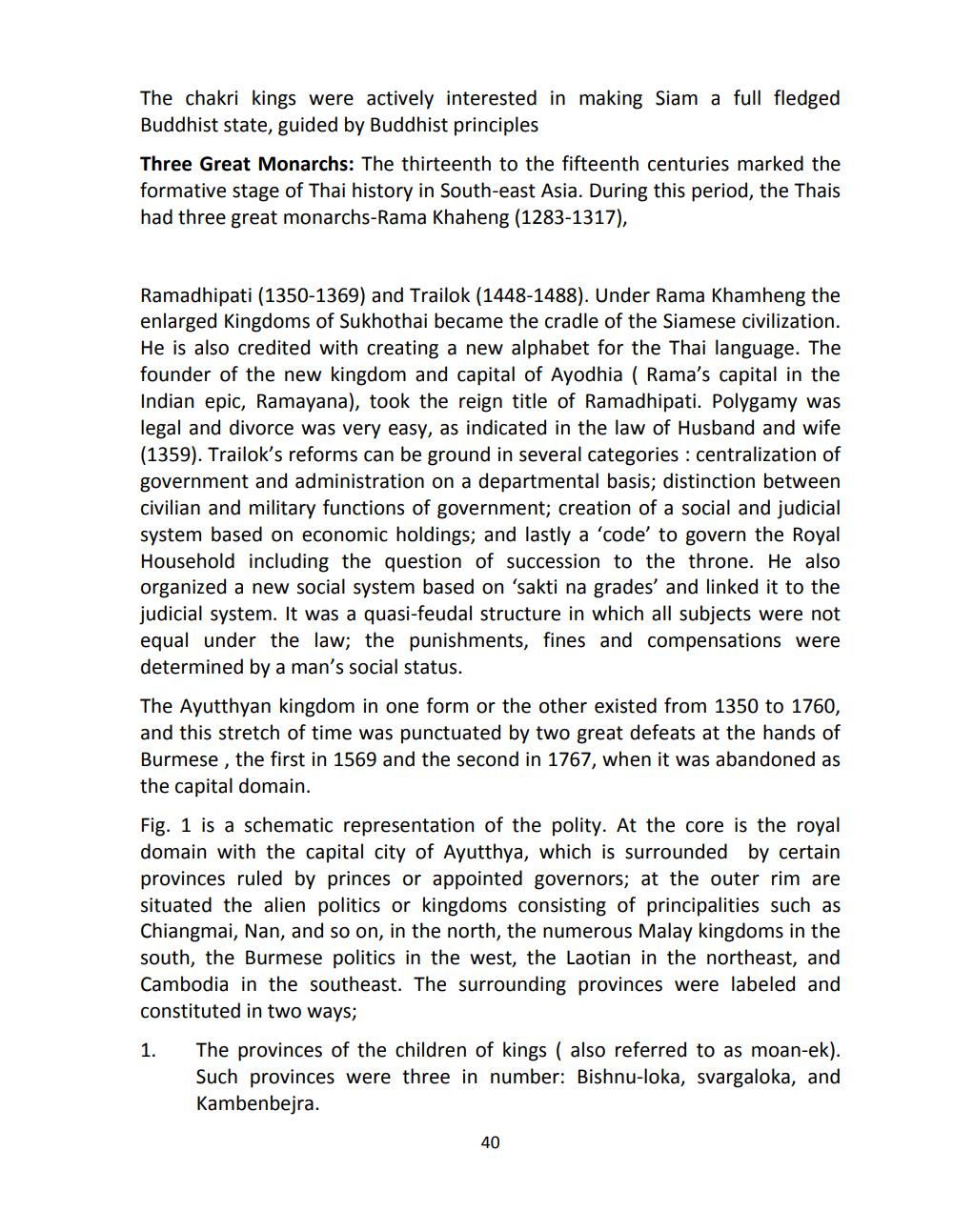________________
The chakri kings were actively interested in making Siam a full fledged Buddhist state, guided by Buddhist principles Three Great Monarchs: The thirteenth to the fifteenth centuries marked the formative stage of Thai history in South-east Asia. During this period, the Thais had three great monarchs-Rama Khaheng (1283-1317),
Ramadhipati (1350-1369) and Trailok (1448-1488). Under Rama Khamheng the enlarged Kingdoms of Sukhothai became the cradle of the Siamese civilization. He is also credited with creating a new alphabet for the Thai language. The founder of the new kingdom and capital of Ayodhia ( Rama's capital in the Indian epic, Ramayana), took the reign title of Ramadhipati. Polygamy was legal and divorce was very easy, as indicated in the law of Husband and wife (1359). Trailok's reforms can be ground in several categories : centralization of government and administration on a departmental basis; distinction between civilian and military functions of government; creation of a social and judicial system based on economic holdings; and lastly a 'code to govern the Royal Household including the question of succession to the throne. He also organized a new social system based on 'sakti na grades and linked it to the judicial system. It was a quasi-feudal structure in which all subjects were not equal under the law; the punishments, fines and compensations were determined by a man's social status.
The Ayutthyan kingdom in one form or the other existed from 1350 to 1760, and this stretch of time was punctuated by two great defeats at the hands of Burmese , the first in 1569 and the second in 1767, when it was abandoned as the capital domain. Fig. 1 is a schematic representation of the polity. At the core is the royal domain with the capital city of Ayutthya, which is surrounded by certain provinces ruled by princes or appointed governors; at the outer rim are situated the alien politics or kingdoms consisting of principalities such as Chiangmai, Nan, and so on, in the north, the numerous Malay kingdoms in the south, the Burmese politics in the west, the Laotian in the northeast, and Cambodia in the southeast. The surrounding provinces were labeled and constituted in two ways; 1. The provinces of the children of kings ( also referred to as moan-ek).
Such provinces were three in number: Bishnu-loka, svargaloka, and Kambenbejra.
40




